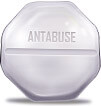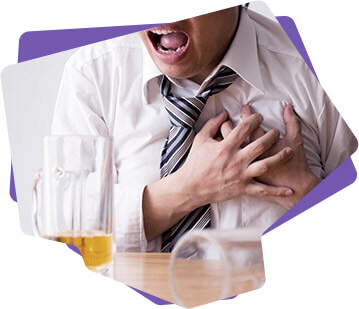Alcoholism: A Silent Enemy
Alcoholism is a pathology that consists of excessive consumption of alcoholic beverages for a long time so that the person ends up developing a dependency that can affect their work and family life.
On many occasions, people who suffer from alcoholism do not want to recognize it, which is a problem, because, in order to treat this disease, the first step is acceptance by the patient. Therefore, it is important to make them aware of the risks posed by alcoholism, since it affects all aspects of daily life.
According to the WHO, alcoholism is defined as a set of behavioral, cognitive, and physiological phenomena that can appear after repeated alcohol consumption. These phenomena typically include intense desire to consume alcohol, difficulty controlling consumption, the persistence of consumption despite the harmful consequences, higher priority to consumption compared to other activities and obligations, increased tolerance to alcohol and withdrawal syndrome.
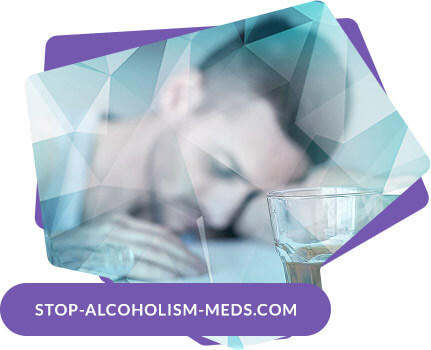
In this way, alcoholism is defined as an addiction in which two elements are combined; a physical need for alcohol and a mental obsession for it. Both come together in a compulsion that neutralizes control and underestimates the consequences. Alcoholism is a disease that cannot be stopped with the will alone. Despite being a progressive and incurable disease, like other chronic diseases, it can be stopped if the appropriate means are put in.
Of all the known drugs, alcohol causes the most damage to the body. The alcohol withdrawal syndrome, known as "deliriums tremens" is one of the few that, along with that of barbiturates and methadone, can end a person's life.
One of the main reasons why alcohol is consumed maybe because our western society forces us to do so. An alcohol-free social event is unacceptable. Alcohol is rarely used to celebrate, celebrate, and reward. Similarly, alcohol is also used to alleviate disappointments, depression, and conflict situations. We are all vulnerable to the effects of alcohol. Where there is use, there is abuse and, there are alcoholics.
Causes
A common cause could not be established. However, there is a genetic predisposition that statistically affects people whose parents or siblings have been or are alcoholics.
On the other hand, characteristics related to social and emotional customs are attributed to it. In other words, it intervenes in both social and emotional-emotional factors that can lead a person to the predisposition for alcohol addiction. In relation to this, alcoholism can be associated as a need to alleviate anxiety, depression, stress, etc.
Loss of control
There is an inability on the part of the alcoholic to limit alcohol consumption, regardless of the context in which it is found. Loss of control occurs due to excess consumption, decreased visual and auditory senses.
What type of person uses alcohol?
There are various classes of alcohol consumers. Some do it responsibly, not harming themselves or others by consuming it, and others do it more irresponsibly and are at greater risk of harming themselves and others.
They can be divided into three categories:
Consumers (occasional or social)
She is the person who does not give any importance to alcohol. Drink occasionally and do not use alcohol for its effects or seek it. Drinking does not cause any problems for him. You can enjoy a social event without drinking any alcohol. You are not seeking to meet your physical, mental, or emotional needs by consuming alcohol. Furthermore, he never uses any other type of drug.
Abuser or excessive consumer
This person gives alcohol the importance that he really does not deserve. Use alcohol as many times as you can, looking for its effects. Use alcohol to resolve your shyness, to reverse yourself, or to combat boredom. Frequently intoxicated or intoxicated. It seeks to generate situations that allow or justify getting drunk. Every time he does so, he and his family or surroundings are harmed. He wastes money and makes bad decisions in areas of his life. The abnormal, for him, has become normal.
You can have problems at work, family, economy, colleagues, justice, etc. The problem is, if you have the genetic predisposition to be an alcoholic, your abuse is paving the way for you to become an alcoholic.
Alcoholic
An alcoholic is anyone who manifests a physical compulsion when using alcohol. That is, when you start consuming alcohol, you cannot predict if you will consume it according to your plans. On the other hand, if the compulsion will take hold of them and they will not be able to stop drinking. The alcoholic does not control alcohol. Alcohol ends up controlling you.
How is an alcoholic identified?
Knowing that the alcoholic is characterized by the obsession and compulsion that he develops in his drinking, what seems to happen is that alcohol begins to take the place of the true neurotransmitters that normally occur in the body of a healthy person and that are altered in the body of a person sick with alcoholism. It is in the search for this balance that the desire and compulsion to drink more occurs. Due to this biochemical reaction, problems begin to appear in different areas of a person's life (work, family, sexual, etc.). The alcoholic continues to use alcohol illogically, irresponsibly, despite many negative consequences. Rather than recognizing the relationship between your alcohol use and your problems, the alcoholic insists that your problems are not related to alcohol use.
Diagnosis
To identify the problem there are almost identical signs and symptoms, regardless of demographic, personality, and socio-cultural heterogeneity of people. Diagnostic criteria have been unified and it has been pointed out that all alcoholics:
- They drink excessively, regardless of their drinking style, their personalities, and the social class to which they belong.
- They are people who have a high degree of obsession, understood this as that constant flow of thoughts oriented to drinking, when to drink and how to do it. These people's lives tend to be organized around alcohol.
- They tend to have negative consequences for the way they drink and most continue to do so, despite the fact that their lives are negatively affected.
- They end up presenting a lack of control over alcohol and, as a consequence, in their lives.
- Denial is present at all times. Denial is understood as the difficulty that the alcoholic presents to recognize, first, that alcohol is a problem that he cannot control and, second, to admit that the problems that appear in his life are directly related to his drinking.
- They develop tolerance, understood as the increasing need for alcohol to achieve poisoning or the desired effect or, also, the decrease in the effect of the same amount of alcohol due to its continued use.
- They present abstinence, that is, the need for alcohol ingestion once it has been withdrawn.
Phases of Alcoholism
First phase: from social drinker to pre-alcoholic phase
Drinking no longer fulfills a social purpose, but the person uses alcohol to satisfy a need or to alleviate an emotion. The amount of alcohol he ingests increases more than those around him drink; he is losing some of the responsibility in his way of drinking. He talks about alcohol frequently and thinks more and more about it.
Second phase: symptomatic stage
You experience mental gaps, forgetting what happened the day before. His drinking begins to change, he takes drinks in one fell swoop; drink before going to parties; she begins to feel the discomfort the next day, which, with each new binge, becomes worse. The family begins to notice that something is wrong, and perhaps his friends at work have caught his attention that he is taking too much.
Third phase: the critical phase
The early stage of the critical phase- The loss of control is clearly experienced. Compulsive drinking; but there are inconsistencies in experiences of loss of control. There are times when she behaves normally and is able to stop drinking when she wants to, while at other times she cannot. This loss of control increases progressively.
- They present a variety of excuses and reasons to explain her behavior, to justify her excesses in drinking. Her defense mechanisms help her to justify herself, and she tends to blame others for her problems.
- The need for a drink begins in the morning to counteract the discomfort he experiences with a withdrawal syndrome.
- Very drastic and serious personality changes can arise. At this stage, a peaceful personality can become destructive, violent, hostile, paranoid, and even dangerous. Alcohol is causing more advanced damage.
- You experience conflict at work, with your family, and with everyone around you, in general.
- At the end of this period, the loss of control is not limited to a single night from time to time, but the alcoholic begins to drink for several days in a row, without stopping. The most indicative symptom of the rapid progress of his addiction is that the loss of control is such that he has to stay in bed on Mondays, for example, and not go to work. He starts drinking from Friday, and cannot stop on Monday.
- You are ceasing to be a periodic drinker, to become a daily drinker. Progressively, it becomes more difficult for you to stay without drinking alcohol because the alteration of certain chemicals in your brain (neurotransmitters) increases.
- The last symptom indicative of this advanced stage of the disease is the loss of tolerance. In other words, little by little the person is getting drunk with less and less alcohol.
Fourth phase: the chronic phase
In this phase the need for the drug is overwhelming. The person has to drink every day to feel physically good.
- Drink without care of everything else: children, family, food, and work. To survive, you have to drink.
- You have tremors in your hands and body when you do not have alcohol in your body.
- You are constantly concerned about how to get your dose of alcohol.
- Their low tolerance becomes obvious. A few drinks produce very strong effects on him. Use this data to continue in self-deception and denial sometimes.
- He has strong resentment against everyone and pathological self-pity for himself. He is in a dead-end, full of fear and anxiety.
The most deceptive phases are the first. Sometimes it is very difficult to recognize and distinguish between the addicted person and the consuming person. One of the most effective keys to identify the addict is the existence of mental gaps.
Experience has shown us that in most cases, the manifestation of mental gaps indicates that there is a predisposition for alcoholism. Young people who drink and then become alcoholics or addicts report that their first mental gaps occurred during their first intoxication experiences.
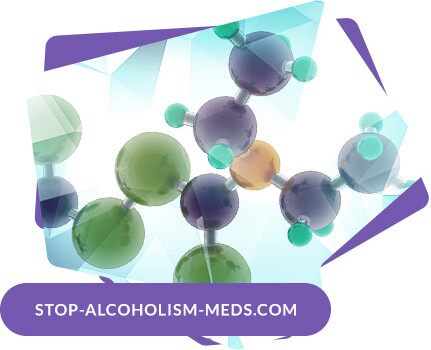
They had them when they still had control over their use of the drug but did not know that it was a possible symptom of alcoholism. At the same time, they did not know that the mental gaps are very short-lived at the beginning of the disease, but that they can last up to days in an advanced stage.
Treatment
From a professional point of view, alcohol addiction requires careful attention, always taught by qualified medical personnel. A therapeutic team evaluates the individual characteristics of each of the patients, establishing different protocols for each case and each circumstance.
Alcohol withdrawal syndrome must be inevitably supervised by adequate and trained specialists.
After evaluation of the medical and psychiatric team, and under their supervision, the most appropriate indication is established for each of their demands. Proof of this is the lack of dropouts in the alcohol detoxification period and the very good scores in the satisfaction surveys of our users after alcoholism treatment.
Thus, there are many medications which can help you with alcoholism. Disulfiram is used to treat chronic alcoholism. It is an alcohol sensitizer and causes unpleasant effects when even small amounts of alcohol are consumed. These effects include flushing, headache, nausea, vomiting, chest pain, weakness, blurred vision, confusion, perspiration, suffocation, shortness of breath, and anxiety. These effects will start about 10 minutes after drinking alcohol and may last up to 1 hour or more.
Pharmacotherapy is part of the treatment of alcoholism and is a radical option for some patients but quite effective when a great recovery is really being sought. If this option is considered within your treatment, it is best to give it an opportunity to notice a great improvement.
An addiction treatment has two fundamental and inseparable objectives: on the one hand, to achieve and consolidate abstinence from all kinds of substances and behaviors; on the other, to initiate a profound change in the way of living, thinking, feeling and acting of the addict.
Taking into account the particular needs of each patient, we can distinguish several types of treatment according to whether it is necessary to live in the treatment center (residential), or if you can continue to stay overnight at your home (not residential).
Articles
Disulfiram: Time to Stop Drinking
Disulfiram is a drug used as an adjuvant in the treatment of alcoholism through an acute reaction called Disulfiram or Antabuse reaction. Many studies have approved and recommended its use. In this section we explain everything you need to know about it: what it is, how it works, its indications, contraindications, uses and efficacy.
Alcohol use is part of many cultural, religious and social practices, and provides perceived pleasure to many people, but when it’s comes to alcoholism or alcohol dependence, according to The International Classification of Diseases (ICD-11) updated last year, it’s a regulation alcohol consumption disorder that occurs due to repeated and continuous use of alcohol, who suffers from it, shows himself as a person unable to control consumption, feels preference for consumption over other activities and persists consuming it despite the harm or negative consequences.
These dependency characteristics can remain over a period of at least 12, but the diagnosis can be made if alcohol consumption is continuous (daily or almost daily) for at least 1 month.
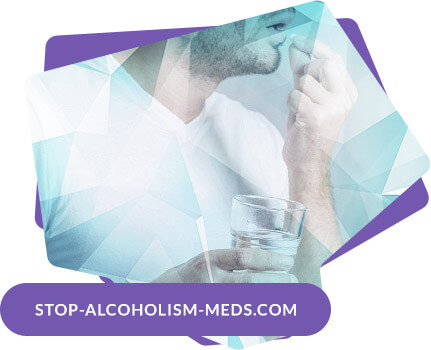
There are several forms or classifications when it comes to alcoholism, but according to ICD-11 they are:
Alcohol dependence, current use:
- Continuous: Alcohol dependence with continuous use of alcohol (daily or almost daily) over a period of at least 1 month.
- Episodic: During the past 12 months, there has been alcohol dependence with an alternation in excessive consumption, this alternation represented by periods of alcohol withdrawal.
Excessive alcohol use increases the risk of a variety of problems, both social, mental, reproductive and immune disorders, and this risk increases with higher consumption. People who struggle with alcoholism most of the time feel that they cannot function normally without alcohol and are tempted to consume it.
According to the 2018 National Survey on Drug Use and Health (NSDUH) 55.3% reported that they drank in the past month and among all cirrhosis deaths in 2013, 47.9% were alcohol related, alarming numbers that show us that it is still a public health problem.
In accordance with ICD, a pattern of alcohol use that has caused damage to a person’s physical or mental health or has resulted in behaviour leading to harm to the health of others is called harmful pattern of use of alcohol.
Harm to health of the individual occurs due to one or more of the following: A behaviour related to intoxication, direct or secondary toxic effects on body organs or systems and a harmful route of administration.
At this point, treatment should be started immediately. There are many therapeutic drugs options like naltrexona, acamprosate and disulfiram (TDS) that can be associated with other therapeutic currents as well, in case the specialist decides so.
What is disulfiram?
Disulfiram, also known as TDS, is a drug approved by the FDA since the 50s that aims to participate in the metabolism of alcohol in our body, preventing it from being degraded.
Fun fact: The disulfiram discovery was pure serendipity. The goal of researching the substance was to find an effective drug for parasitic infections, however, workers testing the substance on themselves reported acute symptoms after alcohol consumption.
At the entry into the study
| Naltrexone n = 50 | Disulfiram n = 50 | |||
|---|---|---|---|---|
| Mean age | 45.6 years | 43.2 years | ||
| Marital Status | 46 (92%) | 48 (98%) | ||
| Employment | 38 (76%) | 39 (78%) | ||
| Secondary education | 44 (88%) | 47 (94%) | ||
| Mean | SD | Mean | SD | |
| Severity of alcohol dependence scale | 29 | 5 | 28 | 6 |
| Addiction severity index | 0.70 | 0.14 | 0.71 | 0.12 |
| Composite craving severity score | 52 | 19 | 51 | 22 |
| Days of drinking in the last 6 months | 87 | 20 | 87 | 22 |
| Typical number of drinks per day | 12.5 | 5.0 | 12.2 | 5.1 |
| Serum GGT U/l | 110 | 98 | 105 | 102 |
| Serum ALT U/l | 81 | 21 | 84 | 19 |
| Serum AST U/l | 64 | 30 | 67 | 31 |
| Days between last drink and start of the study | 15 | 6 | 16 | 10 |
How does it work?
In our body, once we ingest ethyl alcohol, it travels to the liver and thanks to a complex group of elements that help this degradation, is metabolized to its smallest fraction called acetate.
The metabolism is something like: alcohol enters our body, travels through the gastrointestinal system, then into the blood and finally to the liver, where it decomposes thanks to a set of substances called enzymes, alcohol is transformed into acetaldehyde, then to acetate and finally carbon dioxide and water.
When someone takes disulfiram it does not act directly on the alcohol molecule, but on its metabolism in the liver, which has several phases being the oxidative phase the key of this drug and where the deactivation of the enzyme aldehyde dehydrogenase (responsible for this metabolism) happens.
By acting in this phase, TDS prevents the alcohol we ingest from being broken down to its smallest fraction called acetate, thus, this metabolism never ends and some residues accumulates in the blood giving rise to the ‘‘Disulfiram or Antabus reaction’’.
This reaction is nothing more than a set of symptoms caused by the excess of acetaldehyde and some others substances in the blood, being these similar to a "hangover" and ranging from headache, dizziness, nausea, vomiting, increased heart rate and respiratory rate, and in certain cases, it can go up to syncope.
So why is disulfiram used in alcohol dependence? Because with the consumption of just 10 ml of ethyl alcohol you can feel as if you had partied all night, this is why it is called "aversive drug", because with prolonged treatment it produces alcohol rejection and increases the patient's motivation to stay in abstinence.
How should it be taken?
- Always before using any medication, remember to consult a health professional and carefully follow their instructions as prescribed.
- In the same way, we recommend you read the internal package leaflet that contains the medicine before starting any treatment indicated by a professional.
Disulfiram comes as a tablet to take by mouth. It should be taken once a day, with a glass of water and mainly away from meals, after getting up or before going to bed (because in some patients it produces sedation).
Despite the fact that it is quickly absorbed through the digestive tract, it usually takes 3 to 12 hours before its effects are evident and only a small percentage (approximately 15%) is eliminated through faeces and urine.
The tablets presentation ranges from 250 mg up to 500mg and the dosage depends on the time of treatment, an initial ideally dose is 500mg for 1-2 weeks and then gradually reducing it to 250 mg.
The recommended maintenance dose is 125 to 250 mg oral once a day, and should not exceed 500 mg per day. Remembering that in patients with kidney failure, it is important to readjust the doses to avoid overdosing, if you are a patient with kidney disease, it is very important that you notify your doctor about it.
The duration of treatment is variable and its prolonged administration does not produce tolerance. It’s recommended that the regimen does not exceed 6 months, however, its indication depends on the progress of the patient and if he has achieved long-term alcohol withdrawal, being this, the objective of this drug.
Know that before starting treatment with disulfiram your doctor should request that you have not ingested alcohol for at least 12 hours.
As for conservation, keep this drug out of the reach of children and store it at room temperature in a light-resistant container.
Know that, medications should not be thrown down the drain or into the trash. Ask your pharmacist or medical doctor how to get rid of containers and medications that you no longer need. This way you will help to protect the environment.
Interactions:
Understanding that the base of action is towards ethanol, when taking disulfiram you should avoid consuming alcohol or preparations that may have alcohol in their composition, such as; sauces, mouthwashes, cough syrups, and vinegars. Remember that with minimal amounts of alcohol the disulfiram reaction can occur.
Furthermore, there are topical preparations that contain ethanol in their composition and that could cause mild to moderate adverse reactions, however, and as we mentioned before, the intensity of the reaction will depend more on the amount of alcohol than on the presence of it.
Also, being a drug metabolized in the liver with compounds utilizing the cytochrome P450 enzyme system for oxidative metabolism, it competes with other drugs such as benzodiazepines, decreasing plasma clearance of them, and can even have a synergistic effect with other drugs, such as metronidazole, both can inhibit the oxidation of ethanol and cause a toxic reaction in the central nervous system (leads to a greater likelihood of confusion or psychosis).
Cross reactions are also described with: imipramine, phenytoin, chlordiazepoxide, acetaminophen, tricyclic antidepressants, amitriptyline (may cause delirium with concurrent administration).
Similarly, the have been described cases where the concomitant use of disulfiram with isoniazide increases the incidence of adverse effects on the central nervous system, giving symptoms such as dizziness, irritability, lack of coordination and insomnia.
The inhibitory effects of disulfiram at the liver level may be increased when it is administered together with other agents that also have inhibitory effects such as cimetidine, allopurinol, chloramphenicol, fluconazole, omeprazole, propranolol, quinidine, verapamil and warfarin.
It is essential that when you see your specialist doctor you inform him exactly about any other medication you are taking in order to avoid interactions or adverse reactions.
Side Effects: Like any other drug
It is important to emphasize that, like most drugs, the adverse effects of TDS are generally due to a poorly supervised treatment regimen.
As we mentioned at the beginning of this article, the disulfiram reaction is based on frequent acute adverse reactions due to the consumption of ethanol, and its intensity is generally proportional to the amounts of disulfiram and alcohol ingested, but when speaking of side effects it is necessary to detach ourselves from this reaction.
Uncommon side effects (may affect up to 1 in 100 patients):
- Muscles involuntary contractions: Also called dystonic reactions, they are muscular contractions like twists or repetitive movements, they can affect a single muscle up to several muscle groups.
- Dermatological: itchy skin, red or swollen skin, skin sensitivity, skin rash, injuries of any kind: redness, rash, papules (pimple-like), vesicles, blisters and acne.
These effects are usually more frequent during the first 2 weeks, however, as treatment progresses or with a minimal dose reduction, they disappear.
In case of presenting dermatological reactions, treatment them with allergy medication. Antihistamines are usually helpful to improve symptoms.
Rare side effects (may affect up to 1 in 1,000 patients):
- Changes in vision
- Yellowness of the skin and eyes (jaundice)
- Reduced libido (sexual desire)
Very rare side effects (may affect up to 1 in 10,000 patients):
- Psychiatric: mental disorders, including paranoia, schizophrenia and mood changes.
- Seizures, confusion.
- Hepatitis: inflammatory liver disease.
- Hepatotoxicity, hepatocellular damage, fulminant hepatitis (described as liver lesions) and liver necrosis (liver cell death).
There are very few reports of sensory-motor polyneuropathy during the first weeks of treatment, especially with 500mg doses, also, the reports have been so scarce that this can occur in 1 person for every 1000 patients per year.
We must emphasize that if any of these signs or symptoms shows up, you should immediately consult a health professional, even when you detect any side effect not mentioned in this article.
Despite this, a meta-analysis published by M.D. Marilyn D. Skinner of the Addiction Treatment Center at Emile Roux Hospital in Paris, states that taking disulfiram is safe and that, compared to alcohol toxicity, TDS is trivial.
Indications and Contraindications: Can I take Disulfiram?
It is important to ask ourselves this question because it must be clarified that not everyone can take disulfiram. There are candidates for this treatment and differentiating between these patients improves its efficacy.
Candidates include patients dependent on alcohol and who have a hard time quitting it. Ideally, candidates must be COMMITTED to abstinence and willing to take disulfiram under the supervision of a family member, medical specialist or treatment program and also, patients able to understand the consequences of drinking alcohol while taking disulfiram.
Although not essential, if the patient is aware of what they are suffering and what this treatment means to them, administration supervised by a pharmacist, healthcare professional, or family member is preferred as a key component of the treatment plan.
There are certain conditions or circumstances of the patient where the use of this drug is contraindicated, such as the presence of severe myocardial disease or coronary occlusion, psychoses, pregnancy or nursing women (it is not absolutely contraindicated but it should be avoided because the risk is unknown), and in those with risk of impulsivity, suicidality, and hypersensitivity to disulfiram.
Patients who are taking or have recently taken metronidazole, paraldehyde, alcohol, or alcohol-containing preparations should not be given disulfiram (as we mentioned before).
Just as there are contraindications, studies also establish that certain conditions or circumstances do not limit the use of disulfiram, however, it should be used with caution in the following situations: History of cardiac disease, diabetes mellitus, hypothyroidism, epilepsy, cerebral damage, chronic or acute nephritis, hepatic cirrhosis, or hepatic insufficiency, patients with hepatitis C, children and adolescents (safety and efficacy for children has not been determined).
Efficacy: Why use Disulfiram instead of other drugs?
TDS have been shown to be more effective than naltrexona or even psychotherapy alone, states Colin Brewer, Director of Research at the Stapleford Centre, in his research Supervised disulfiram is more effective in alcoholism than naltrexone or acamprosate - or even psychotherapy: how it works and why it matters.
Brewer explains that naltrexone and acamprosate, although effective, only reduce desire and do not prevent the patient from drinking alcohol, which means, the patient can still drink while taking these drugs without any consequences.
Moreover, in a recent meta-analysis of 11 randomized controlled trials of 1,527 patients, researchers concluded that supervised disulfiram really did have some effect on the short-term abstinence and number of drinking days when compared to placebo, no treatment or other treatments available for patients with alcoholism.
In other studies, only a small percentage (5–18%) of 345 alcohol-dependent inpatients discontinued disulfiram owing to side effects.
Thus, it is not the side effects that lead to discontinuation of disulfiram, but the basic characteristics of alcohol dependence that lead to relapse.
In addition to being an underused drug, it is much cheaper, accessible on the market and very effective as a deterrent to alcohol since fear of an Ethanol-Disulfiram reaction forces the patient to stop alcohol when undergoing treatment.
Some specialists may recommend its use in combination with psychotherapy and other social therapies such as attending support groups or referring a psychologist.
Regarding this statement, certain studies ensure that psychological therapies are a complement to treatment, according to research that analyzed the effect of supervised disulfiram together with cognitive behavioral therapy (CBT) in 39 patients with alcohol dependence, they reported a withdrawal rate of 20% and 26% in the control and disulfiram groups respectively.
Other uses: A cure for Cocaine Dependence too?
Cocaine dependence and abuse is one of the growing substance use problems in the world today. There has been an increase in the number of cocaine users in recent years, according to the 2019 Monitoring Future survey, 8th, 10th and 12th grade students have used cocaine the previous year, one of the reasons explained is its use for the ''flu''.
Over the years there have been reports that disulfiram, which is presently indicated for the treatment of alcohol dependence, has shown potential as a treatment for cocaine dependence in most clinical trials and research.
The use of disulfiram as a treatment in cocaine dependence has been attributed to several mechanisms, one of them based on the inhibition of cocaine metabolism by deactivating the enzymes carboxylesterase and cholinesterase, causing it to accumulate in the blood and generate cardiovascular effects.
In our brain there are hundreds of receptors, these are something like ‘‘substance recognizers’’ while the substances to be recognized are called neurotransmitters and these are responsible for carrying information from one neuron to another.
Dopamine, norepinephrine and serotonin are examples of neurotransmitters present in our brain and are key in this mechanism of action.
When someone uses cocaine, a reward reaction occurs in their brain explained by the release of neurotransmitters such as dopamine, serotonin and norepinephrine, which gives the user a feeling of euphoria and happiness.
In regards to its mechanism of action, disulfiram also influences the metabolism of these neurotransmitters when administered to cocaine-consuming patients, by inhibiting the enzymes that break them down.
Its effectiveness is also attributed to including a decrease in cocaine reward mechanisms, an increase in cocaine aversion, or as a ‘Dopamine replacement therapy’ that elevates its levels and restores normal reward function in hypodopaminergic addicts.
According to a randomized controlled trial in 122 combined cocaine–alcohol substance abusers it was noted that disulfiram treatment was associated with significantly better retention in treatment, as well as longer duration of abstinence from alcohol and cocaine use.
Perhaps disulfiram is a very effective treatment to treat both dependencies, especially in patients with double dependence, however, it has not been approved yet by the FDA as a guideline in the treatment of cocaine dependence.
What happens if I miss a dose?
If you forget a dose, nothing happens, you can take it as soon as possible as you remember. If the missed dose is almost time for the next dose, take only one dose. Do not take extra or double doses and remember that you should never take disulfiram within 12 hours of consuming alcohol.
Whats happens if I overdose?
High doses of disulfiram (up to 6 g/day) have low toxicity in humans. Overdose symptoms include vomiting, headaches (headache), listlessness, ataxia (loss of movement control), irritability, hallucinations, psychosis, loss of consciousness, and seizures.
If you take more doses than prescribed by a health professional or experience any of these symptoms after taking more doses than you should, you must immediately go to the nearest health center or immediately contact your treating doctor.
A recommendation from us:
As pharmacists, we believe in the adequate and controlled use of the medicines that we recommend to our patients. We are committed to your well-being and your health.
As we have mentioned throughout the text, it is always necessary that before consuming any medication you be evaluated by a specialist doctor.
If you have already been evaluated by a health professional who has considered that you are a suitable candidate to start treatment with disulfiramand prescribed it to you, we as professionals provide you with the best option and we recommend that you start this treatment as soon as possible, so that you, as a human being, can improve your quality of life and that of those around you.



